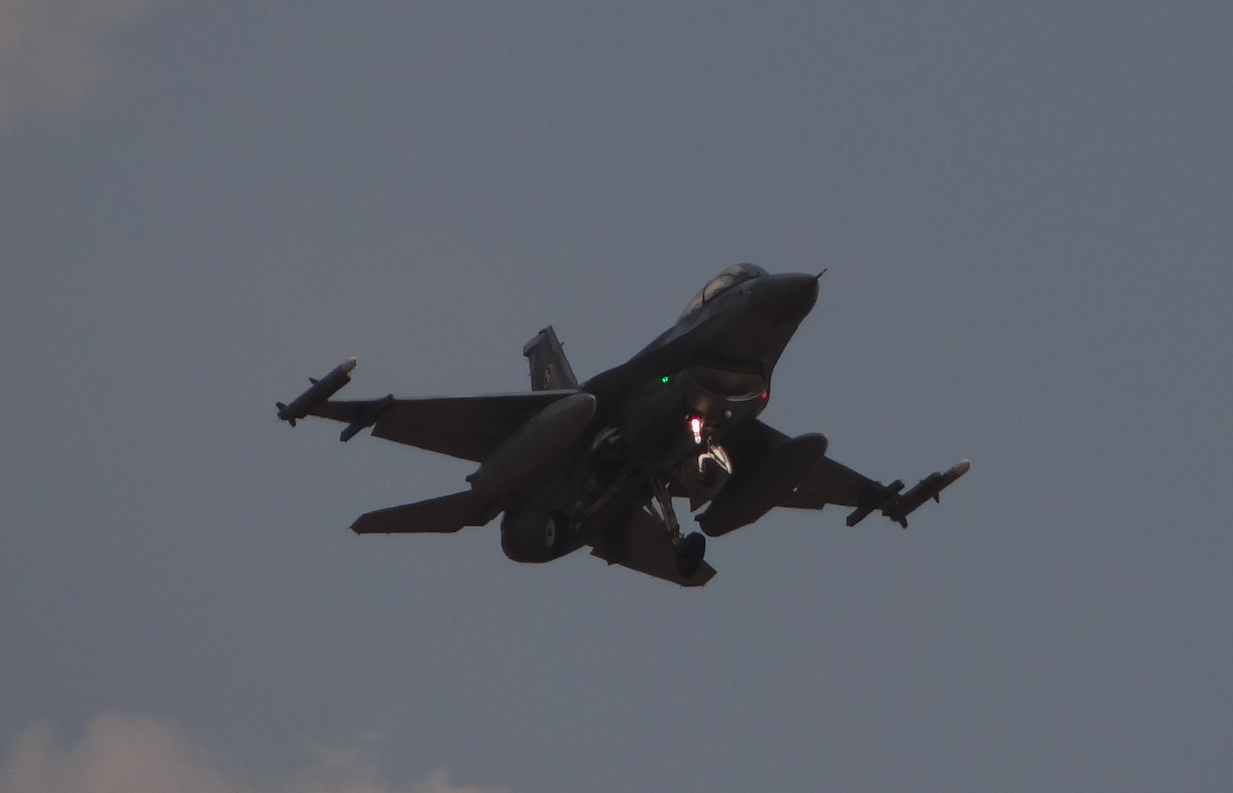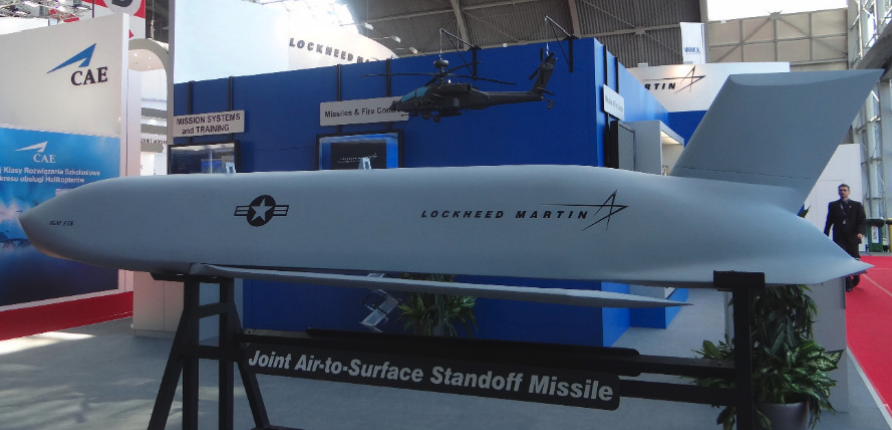Kraków 2015-12-03
Lockheed Martin F-16 C, D Block 52 + Jastrząb.
315 Section 2006-11-08. Poland
Arming of Polish F-16 Jastrząb aircraft.
AGM-158 JASSM.
Already in 2012, the Ministry of National Defense of the Republic of Poland began talks on the subject of arming the Polish Army. – "We have rockets enabling the destruction of ground targets from a distance of 75 km, but we would like to increase the destruction capabilities to 300 km" – said General Mieczysław Cieniuch, Chief of the General Staff of the Polish Army in 2012. Specifically, it was to equip the F-16 Jastrząb multi-purpose combat aircraft with AGM-158 JASSM maneuvering missiles to destroy ground targets over long distances. Because the AGM-158 JASSM is extremely modern and required the approval of the US administration, it was necessary to wait for political decisions. In connection with the aggressive policy of Comrade Putin, Poland received the decision after a few months, and for example Finland was waiting for such a decision for 8 years. Signed in 2014, the contract was worth $ 500 million and initially it was for 40 missiles.
AMG-158 JASSM is a Joint Air-to-Sur face Stand off Missile, with a range of 370 km. In 2002, work was already underway to increase the range to 600 miles (over 1,000 km). The missile was introduced to the armament of the USAF in 2003. A missile used to destroy point targets out of the enemy’s anti-aircraft defense range.
The competition for the new missile began in 1995. The goal was to create a long-range missile with a relatively low price. The first stage was won by Lockheed Martin (AGM-158) and McDonnell Douglas (AGM-159), which in 1996 received contracts to build mockups and conduct tests. In 1998, the Lockheed Martin project was selected. Flight tests were carried out in the years 1999–2001. Tests were performed using an F-16 carrier. Tests for US NAVY were conducted using F / A-18 E / F Super Hornet aircraft. On 19.12.2001, a contract was signed for the production of the first, short series. After removing the defects noticed at the end of 2003, the missile was adopted for armament and a decision was made about its mass production.
AGM-158 B JASSM ER (Extended Range) is a version with an extended range of up to 600 miles (over 1,000 km). AGM-158 A / B JASSM missiles are carried by F-15, F-16, F / A-18, F-35, B-1 B, B-2, B-52 aircraft. Poland has purchased the AGM-158 A JASSM version, which will be used in the fourth quarter of 2016.
AGM-158 (JASSM) Joint Air-to-Sur face Stand off Missile data: Lockheed Martin, air-ground class, length 4.27 m, span 2.40 m, weight 1.020 kg, marching propulsion Teledyne jet engine CAE J402-CA-100 with 3.0 kN thrust, 370 km range, INS three-system guidance (inertia), GPS, thermal imaging, warhead (WDU-42 / B with AFX-757 explosive) weighing 454 kg.
F-16 MLU simulator in Poland.
In the 90 years, the US offered Poland the purchase of F-16 A / B aircraft from stocks. Planes would be offered for free. Poland would pay for the renovation of these aircraft, modernization of equipment, armament and training of pilots and ground handling.
On November 3-13, 1998, at the premises of the Military University of Technology in Warsaw, Lockheed Martin presented the F-16 Fighting Falcon multipurpose aircraft simulator cabin, reflecting the cabin equipment in the Mid-Life Update (MLU) version. F-16 A / B, which are part of the Belgian, Danish, Dutch, Norwegian and Portuguese air forces, are currently being modernized to such a standard. This simulator allows you to perform a variety of combat missions with many types of weapons, enabling the combat of aerial and ground targets. Realism of the presentation ensured by displaying the image seen by the pilot on three large screens, sound system and interactive reflection of threats.
Each of the journalists participating in the presentation had the opportunity to have a "flight" in the cabin of the F-16 simulator. "The flight" turned out to be not very difficult, because it is not a simulator with 6 degrees of freedom, used to train military pilots, but rather a demonstrator of the possibilities of equipping the cabin (with a joistik, throttle lever and pedals) and avionics. The air struggle did not resemble the battles fought by fighters of World War II. After noticing the opponent on the radar screen, all he had to do was target him and launch missiles, which always hit the target. The effectiveness of our attacks was undoubtedly influenced by the attitude of a simulated opponent who used neither dodges nor interfering devices. That’s why our combat effectiveness was 100%. Nevertheless, under the conditions of war, the controls of such an aircraft will not sit journalists, but well-trained military pilots who should deal with a more demanding opponent. Nevertheless, the possibilities of avionics made a big impression on journalists. At the end, the company’s representatives handed a nice gift – a certificate confirming the flight in the F-16 simulator.
The F-16 MLU has a wide-angle head-up indicator (HUD), as well as internal and external lighting (position and navigation lights) enabling the use of night-vision goggles. All information about engine airframe systems is displayed on two 12.5 x 15 cm color Multi Functional Display (CMFD) monitors. The pilot can choose up to 12 indication options, depending on the needs and tactical situation.
Written by Karol Placha Hetman


